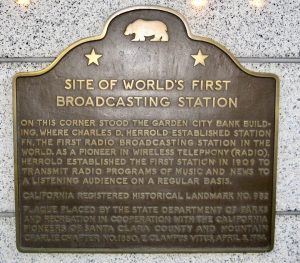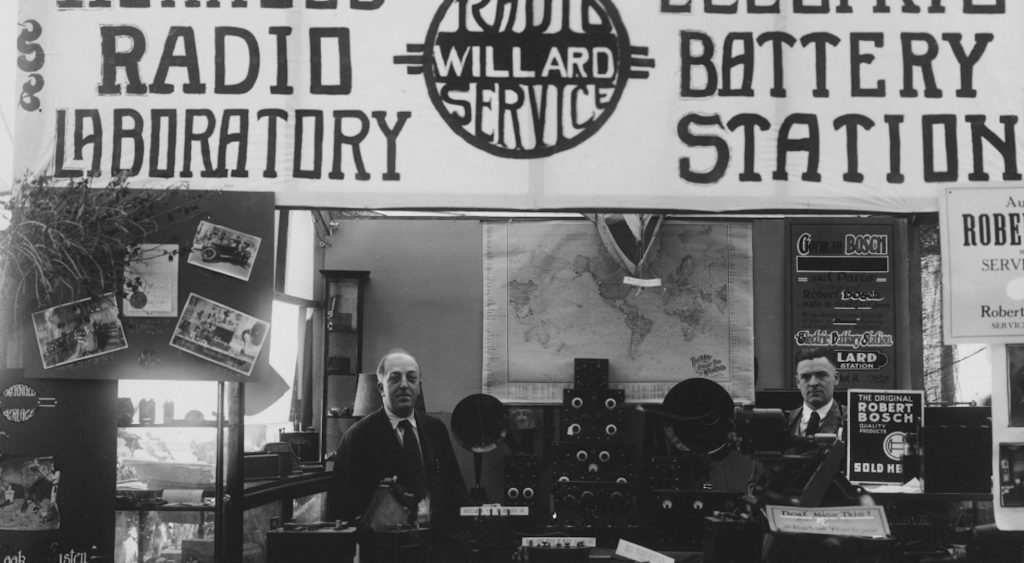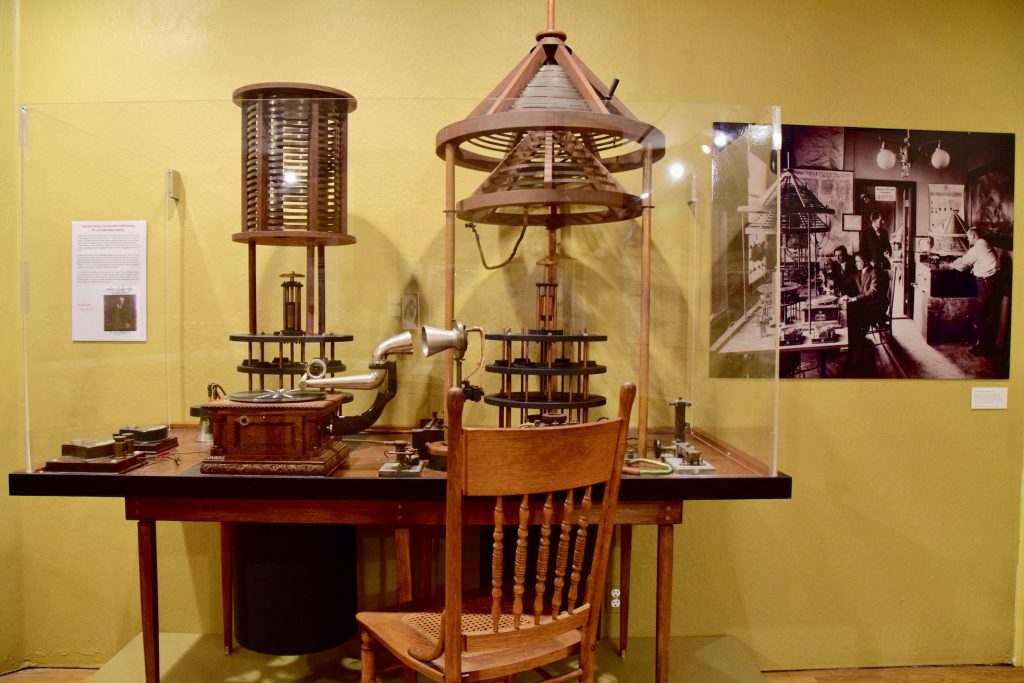World’s First Radio Station
Doc Herrold launched worlds first radio station in downtown San Jose in 1909. And, coined the term “broadcasting”. His radio station is now KCBS 740 AM.
Doc Herrold and the Birth of Modern Broadcasting: A Revolutionary Legacy from San Jose, 1909
The history of modern broadcasting traces its roots back to a modest yet groundbreaking initiative in downtown San Jose, California, in 1909. Charles “Doc” Herrold, an innovative inventor and educator, made history by establishing the world’s first radio station capable of regular programming. This pioneering achievement not only marked the genesis of a transformative technology but also introduced key concepts that would shape the future of global communication. From coining the term “broadcasting” to featuring his wife, Sybil Herrold, as the first woman DJ, Doc Herrold’s story exemplifies the spirit of creativity and innovation.
The Creation of the First Radio Station
In an era dominated by telegraphy and burgeoning interest in wireless communication, Doc Herrold envisioned a medium that could deliver sound directly into people’s homes. In 1909, from his College of Engineering and Wireless at 50 West San Fernando Street, he built a station that transmitted voice and music using a cutting-edge spark-gap transmitter. The location of this historic breakthrough is now home to the KQED building in downtown San Jose, adding another layer of significance to this historic site.
Unlike earlier experiments that focused primarily on point-to-point communication, Herrold’s invention broadcast sound in all directions, making it accessible to anyone with a compatible receiver. His station, originally called “San Jose Calling,” became a cornerstone of broadcasting history, offering regular, scheduled programming of music, news, and other content. This marked a stark departure from sporadic Morse code transmissions or experimental voice broadcasts and laid the foundation for the modern radio station model.
The Transition to KCBS
Herrold’s radio station did not remain a small local experiment. Over the years, it evolved and expanded, ultimately becoming KCBS, one of the most renowned radio stations in the United States, now based in San Francisco. KCBS traces its origins to Herrold’s groundbreaking work, carrying forward his legacy of innovation and commitment to quality programming. This connection underscores the significance of Herrold’s contributions to the field of broadcasting and cements San Jose’s place in the history of global communication.
The Term “Broadcasting”
Doc Herrold is credited with introducing the term “broadcasting” to describe the wide dissemination of sound signals. Inspired by the agricultural practice of scattering seeds across a field, Herrold used the term metaphorically to describe the distribution of radio waves to multiple listeners simultaneously. This concept, revolutionary at the time, encapsulated the essence of radio’s potential to reach vast audiences. Today, the term “broadcasting” is not only fundamental to radio but also to television and digital media, cementing Herrold’s lasting impact on global communication.
Sybil Herrold: The World’s First Female DJ
A significant and often overlooked aspect of Herrold’s legacy is the role of his wife, Sybil Herrold. Sybil became an integral part of the broadcasting operations, curating and presenting music selections on her husband’s radio station. In doing so, she earned the distinction of being the world’s first female DJ. Her work on the airwaves was groundbreaking in its own right, as she demonstrated the potential for radio to serve as a platform for diverse voices and perspectives.
Sybil’s contributions went beyond playing music. She helped define the informal yet engaging style of radio broadcasting that would become a hallmark of the medium. Her presence on air challenged the male-dominated norms of early radio and set the stage for future generations of women in broadcasting.
A Lasting Legacy
Doc Herrold’s achievements in 1909 ignited a century of innovation in broadcasting. His downtown San Jose station at 50 West San Fernando Street was a prototype for the countless radio stations that followed, revolutionizing the way people accessed news, entertainment, and music. The station’s evolution into KCBS underscores the enduring impact of Herrold’s vision. Moreover, the pioneering work of Sybil Herrold demonstrated the medium’s capacity for inclusivity and creativity, aspects that remain central to broadcasting today.
The story of Doc and Sybil Herrold is a testament to the innovative spirit of the Bay Area, a region that has consistently pushed the boundaries of what is possible. Their contributions not only gave birth to an industry but also shaped the way humanity shares stories, ideas, and art. Over a century later, the echoes of their work continue to resonate, proving that innovation and vision can truly transform the world.
Hear Doc’s Voice
Herrold Radio Broadcasting Station
Charles Herrold, a pioneer in radio, was the first person to transmit radio programs of music and news to a listening audience. Beginning in 1909, three years before Congress’ Radio Act of 1912, Herrold broadcast from his College of Engineering and Wireless located in the Garden City Bank Building at First and San Fernando Streets. His first wife, Sybil, was the first woman disc jockey in the country; together they initiated commercial radio advertising. A tireless experimenter, Charles Herrold developed more than fifty radio-related inventions.

Herrold Radio Broadcasting Station Marker
Site of Worlds First Broadcasting Station / World’s First Broadcasting Station

Site of Worlds First Broadcasting Station Marker (Marker 1)
Let’s celebrate the centennial of Charles Herrold’s historic radio broadcasts
Additional Did You Know's
Unraveling The History Of The First Grateful Dead Show.
The band’s members began their musical journey largely in the South Bay – leading epically to their first show under the “Grateful Dead” name at a house in downtown San Jose.
How San Jose Became Dead First — And Hosted The Band’s Debut Performance
December 4, 1965: The Grateful Dead’s first performance as the Grateful Dead occurred in a home in downtown San Jose now the site of San Jose’s City Hall.
Hal David Knew the Way to San Jose
The song earned Dionne Warwick her first Grammy and sold over 3.5 million copies.
Cupertino has ‘No Use for a Name’
A punk rock band from Cupertino formed in 1987 is highly praised in the Skate punk and Hardcore punk scenes. Their debut album, Incognito, was released in 1990. They had a Top 40 hit in the mid ’90s with “Soulmate.” In 1997, after the success of Making Friends, the band went on a worldwide tour…
Los Gatos’ Chateau Liberte: Lights. Camera. Reaction.
The Chateau Liberte’ a feature documentary. The Chateau was a rustic mountain bar ran by Hells Angels where great rock bands played in the 60’s/70’s. It was also a hippie commune with its own self-sustained way of life.
Los Tigres Del Norte: the Beatles of Mexican music.
With half a dozen Grammys and sales in the tens of millions, able to pack arenas all over the country, Los Tigres del Norte—The Tigers of the North— is the most famous band mainstream America never heard of.
2020 Rock & Roll Hall of Fame: The Doobie Brothers
Since forming in 1969, The Doobie Brothers have sold more than 48 million albums, including three multi-Platinum albums, seven Platinum albums, and 14 Gold albums.
Larry Norman: the Elvis Presley of Christian Rock
San Josean Larry Norman is considered to be one of the pioneers of Christian rock music and released more than 100 albums.
Creedence Clearwater Revival: Go Spartans!
1967 – 1972: Formed by John Fogerty, Doug Clifford (born in Palo Alto), and Stu Cook in the late 1950s. Doug and Stu attended San Jose State, playing now under the name Golliwogs. In 1967 the band, now with Tom Fogerty, became Creedence Clearwater Revival.
Jefferson Airplane, South Bay Roots
Formed in August 1965 by Marty Balin, was populated mostly by South Bay musicians when he teamed up with Paul Kantner University of Santa Clara (1959-61) and San Jose State University (1961-63), Jorma Kaukonen (University of Santa Clara 1962) and singer Grace Slick resident of Palo Alto who joined the band in 1966.

















